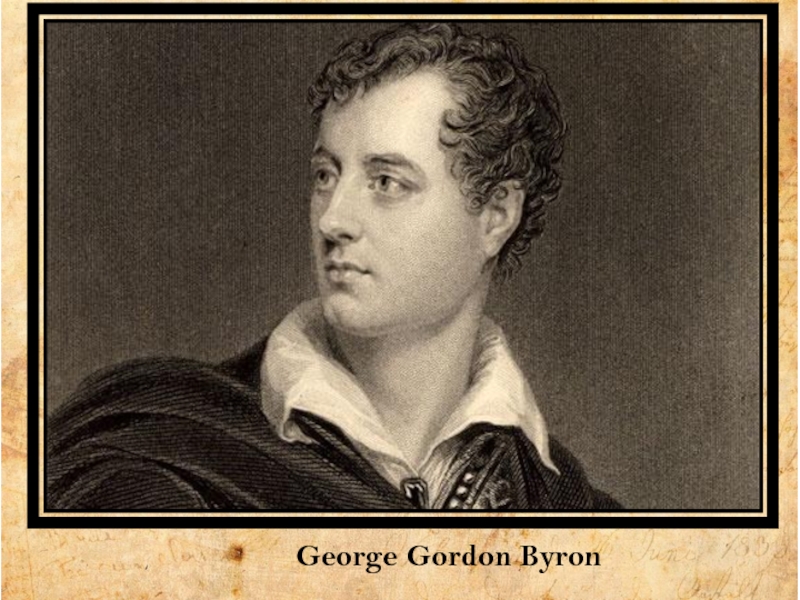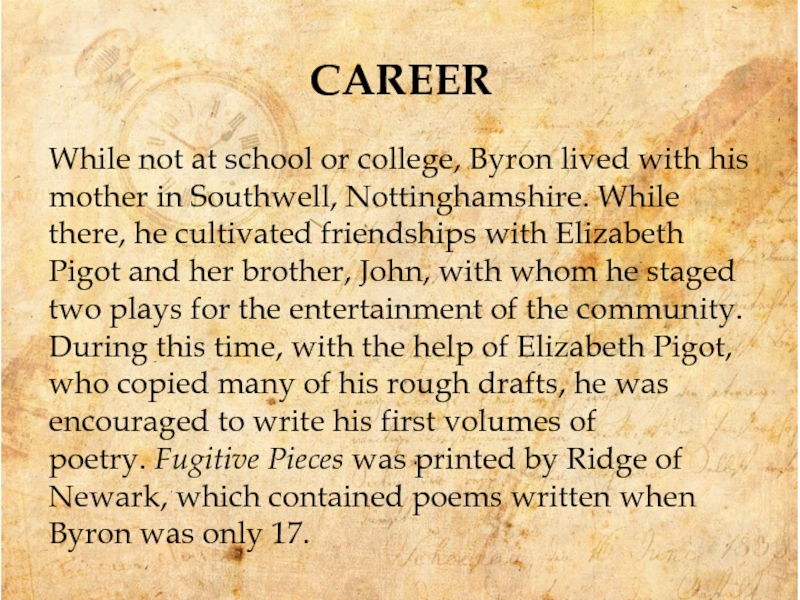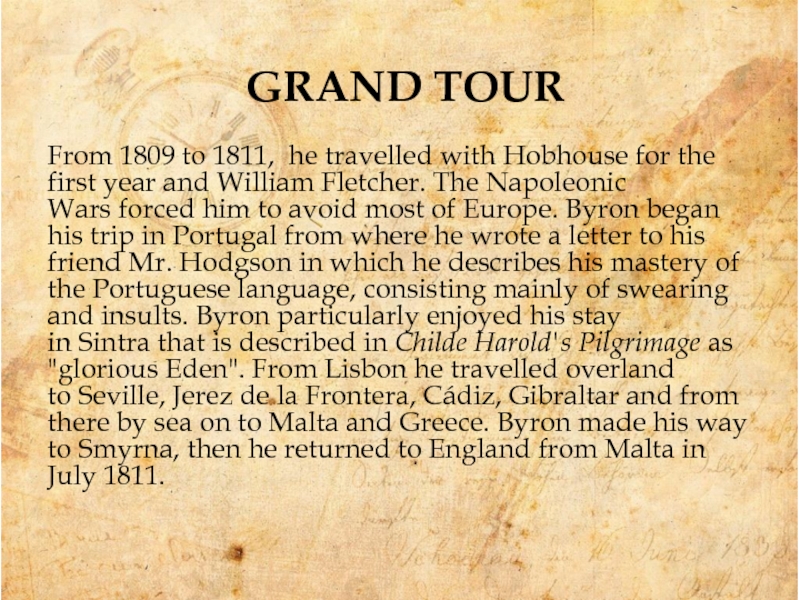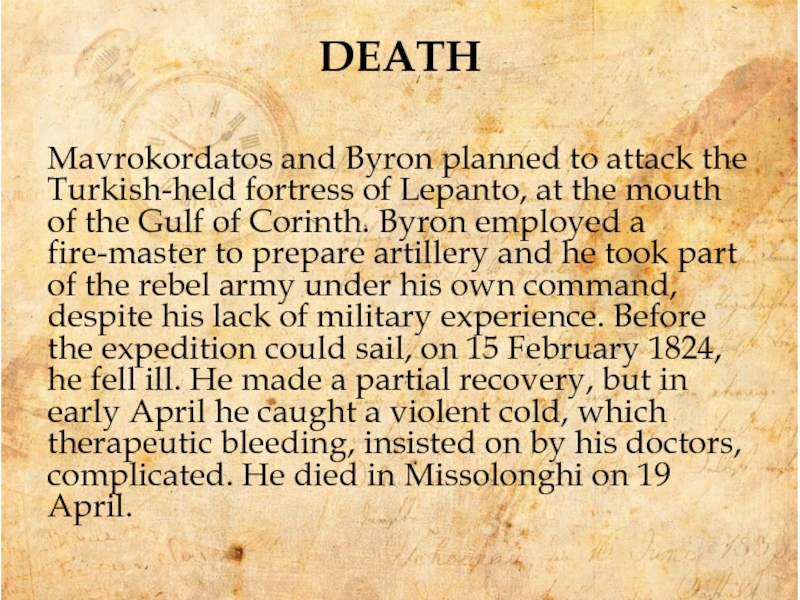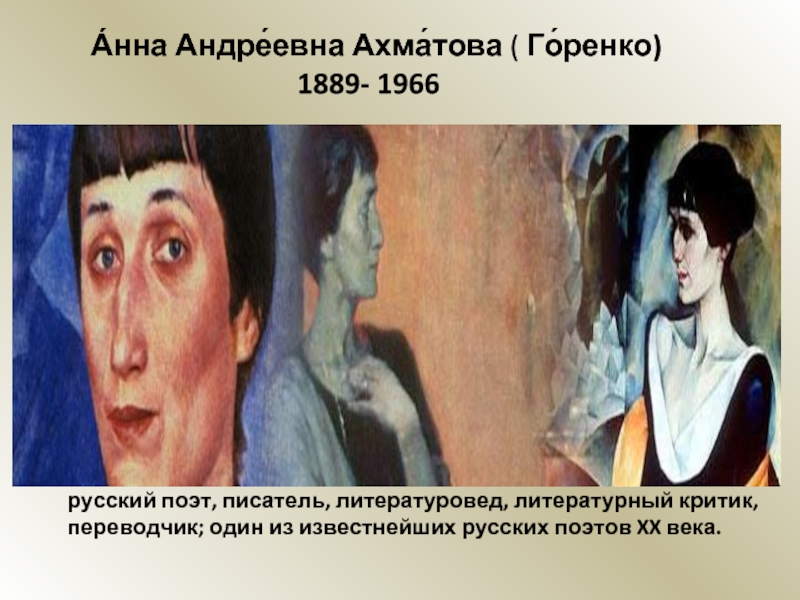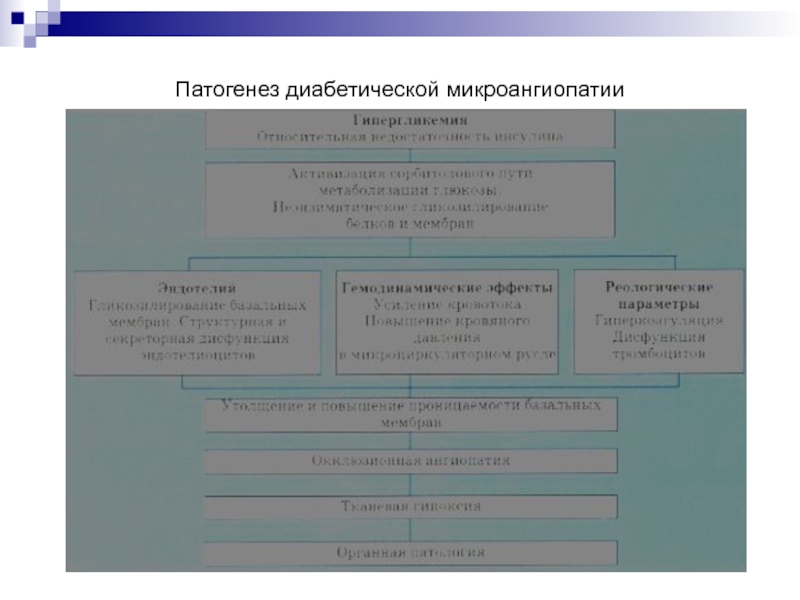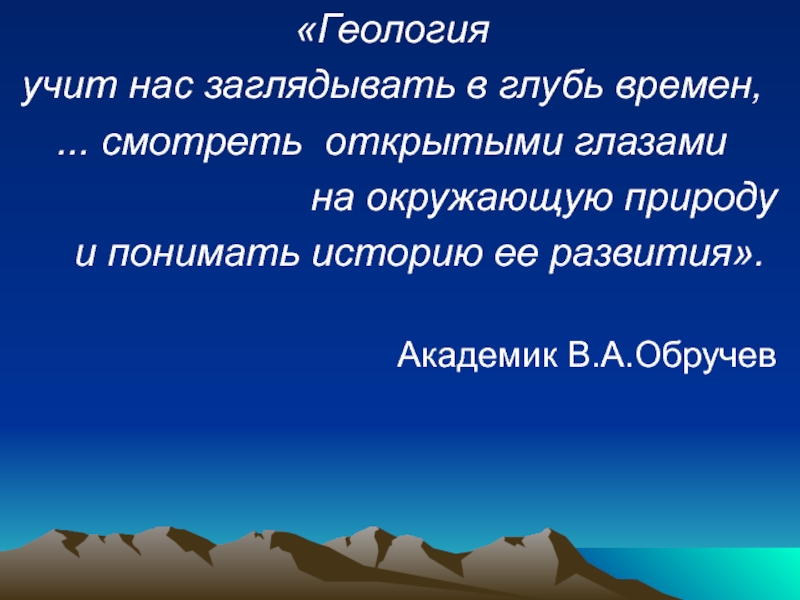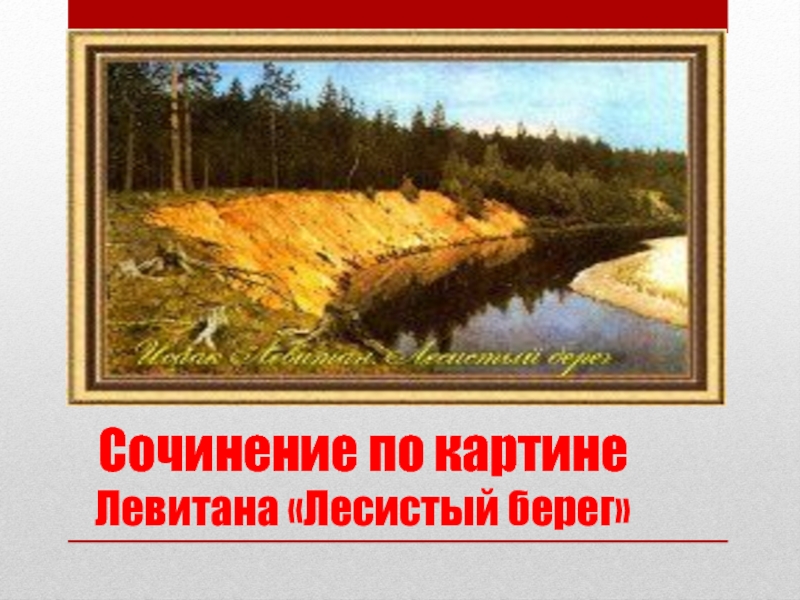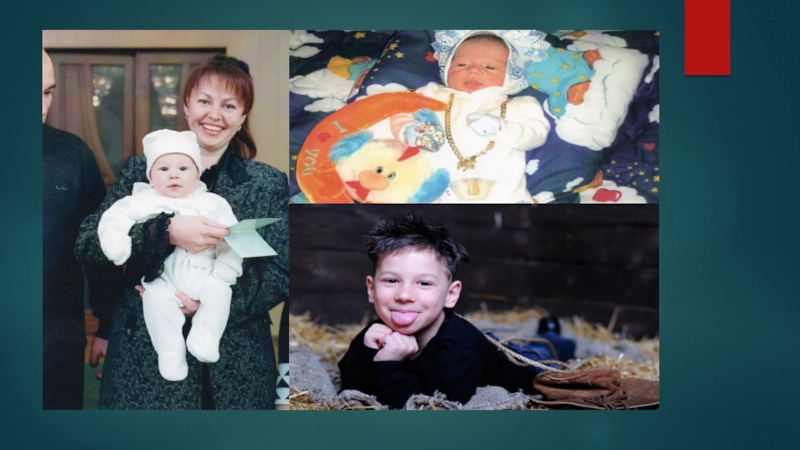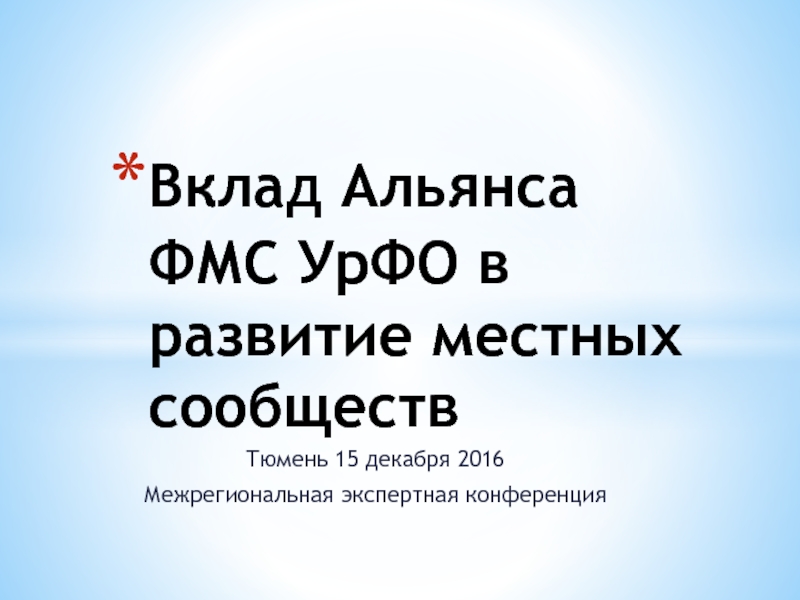Слайд 2George Gordon Byron, 6th Baron Byron (22 January 1788 – 19 April
1824), known simply as Lord Byron, was a British poet, politician, and leading
figure in the Romantic movement. He is regarded as one of the greatest British poets and remains widely read and influential. Among his best-known works are the lengthy narrative poems Don Juan and Childe Harold's Pilgrimage; many of his shorter lyrics in Hebrew Melodies also became popular.
Слайд 3Byron was the son of Captain John "Mad Jack" Byron and his
second wife, the former Catherine. Byron received his early formal
education at Aberdeen Grammar School, and in August 1799 entered the school of Dr. William Glennie, in Dulwich. Placed under the care of a Dr. Bailey, he was encouraged to exercise in moderation but could not restrain himself from "violent" bouts in an attempt to overcompensate for his deformed foot. His mother interfered with his studies, often withdrawing him from school, with the result that he lacked discipline and his classical studies were neglected. His lack of moderation was not restricted to physical exercise. Byron fell in love with Mary Chaworth, whom he met while at school, and she was the reason he refused to return to Harrow in September 1803. Byron finally returned in January 1804, to a more settled period which saw the formation of a circle of emotional involvements with other Harrow boys. The following autumn, he went up to Trinity College, Cambridge, where he met and formed a close friendship with the younger John Edleston. Byron spent three years at Trinity College, engaging in sexual escapades, boxing, horse riding and gambling.Also while at Cambridge he formed lifelong friendships with men such as John Cam Hobhouse, who initiated him into the Cambridge Whig Club, which endorsed liberal politics, and Francis Hodgson, a Fellow at King's College, with whom he corresponded on literary and other matters until the end of his life.

Слайд 4CAREER
While not at school or college, Byron lived with his
mother in Southwell, Nottinghamshire. While there, he cultivated friendships with Elizabeth Pigot
and her brother, John, with whom he staged two plays for the entertainment of the community. During this time, with the help of Elizabeth Pigot, who copied many of his rough drafts, he was encouraged to write his first volumes of poetry. Fugitive Pieces was printed by Ridge of Newark, which contained poems written when Byron was only 17.
Слайд 5 GRAND TOUR
From 1809 to 1811, he travelled with Hobhouse for
the first year and William Fletcher. The Napoleonic Wars forced him to avoid
most of Europe. Byron began his trip in Portugal from where he wrote a letter to his friend Mr. Hodgson in which he describes his mastery of the Portuguese language, consisting mainly of swearing and insults. Byron particularly enjoyed his stay in Sintra that is described in Childe Harold's Pilgrimage as "glorious Eden". From Lisbon he travelled overland to Seville, Jerez de la Frontera, Cádiz, Gibraltar and from there by sea on to Malta and Greece. Byron made his way to Smyrna, then he returned to England from Malta in July 1811.
Слайд 6GREECE
On 16 July, Byron left Genoa arriving at Kefalonia in the Ionian Islands on
4 August.His voyage is covered in detail in Donald Prell's »Sailing with
Byron from Genoa to Cephalonia». To help raise money for the revolution, Byron sold his estate Rochdale Manor in England, which raised some £11,250 pound sterling, which led Byron to estimate that he now had some £20,000 pounds at his disposal, all of which he planned to spend on the Greek cause. In today's money Byron would have been a millionaire many times over, and the news that a fabulously wealthy British aristocrat known for his generosity in spending money had arrived in Greece made Byron the object of much solicitation in a desperately poor country like Greece. Byron wrote to his business agent in England "I should not like to give the Greeks but a half helping hand", saying he would have wanted to spend his entire fortune on Greek freedom
Слайд 7DEATH
Mavrokordatos and Byron planned to attack the Turkish-held fortress of Lepanto,
at the mouth of the Gulf of Corinth. Byron employed a
fire-master to prepare artillery and he took part of the rebel army under his own command, despite his lack of military experience. Before the expedition could sail, on 15 February 1824, he fell ill. He made a partial recovery, but in early April he caught a violent cold, which therapeutic bleeding, insisted on by his doctors, complicated. He died in Missolonghi on 19 April.
